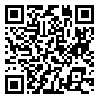BibTeX | RIS | EndNote | Medlars | ProCite | Reference Manager | RefWorks
Send citation to:
URL: http://sjsph.tums.ac.ir/article-1-156-en.html
Background and Aim: In the past few years publications in the field of medicine have increased considerably in Iran and knowledge production in this country shows the greatest growth rate in the entire Middle East region. Considering the fact that 12% of all faculty members in the health and medical sector in Iran are employed by Tehran University of Medical Sciences, this university is regarded as the country's leading research institution. This study is focused on the behavior of the researchers in this university in terms of collaboration in research and factors that affect such behavior.
Materials and Methods: Our samples included all research projects in Tehran University of Medical Sciences that had obtained grants from inside and outside the university in 2004, had registered their contracts, had been finished by the time of this study (October 2006- March 2007) and whose final reports had been submitted (315 projects). The data collecting forms were filled for 301 files. The researcher's questionnaire was sent to the principal investigators of the projects and eventually 208 questionnaires were collected. We used the SPSS software package and the usual statistical tests (frequency ratio, chi square, analysis of variance and multiple linear regression with the Enter method) to assess the factors affecting the participation scores of individuals. Based on the data gathered from the forms, we used the UNICET software to analyze the 'cooperation network' between project directors and their principal co-workers and the relationship between different sections of the university.
Results: Only in 2.2 percent of the projects whose contracts were arranged in 1383 there has been some cooperation between the project director/principal coworkers and non-academic organizations. This ratio reaches 2.5% for collaboration with other universities. Among all projects, health system research programs show a better status of collaboration. Linear regression analysis showed that another important factor affecting the participation score is the "method for choosing the research topic". University-affiliated research centers only collaborate with the Schools of Medicine and Public Health, while in the School of Rehabilitation and Physical Medicine all projects are defined within the School's own structure, with virtually no collaboration with any other sections of the university.
Conclusion: The present study showed that research programs in this university include little collaboration with organizations outside the university or with other universities. Part of this is related to the current structure of the research sector in the country, which is largely financed by the government with hardly any participation by the private sector. Current potentials within the University make it possible to embark upon joint research initiatives with other academic institutions. As the possible effect of intervention on health system research has been shown, policies can be implemented to promote effective collaborative research at university and national level.
Received: 2007/08/11 | Accepted: 2008/02/19 | Published: 2013/08/10
| Rights and permissions | |
 |
This work is licensed under a Creative Commons Attribution-NonCommercial 4.0 International License. |





